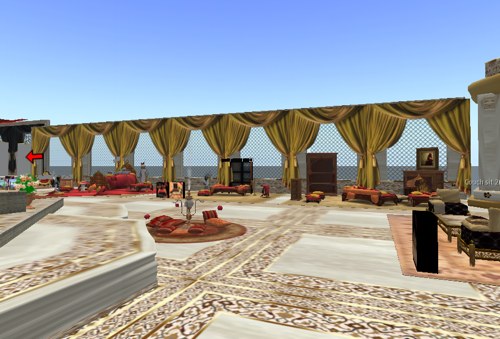It’s with great pleasure we feature a guest post from Tateru Nino. We’ve profiled Tateru previously for good reason – there are few people who would understand Second Life more fully.

That’s a simple enough fact. Without communities, there can be no commerce. Even the simplest of communities suffices, but in the absence of it, you’re not going to make sales or effectively market your products.
In the offline, atomic world, communities are largely a matter of geography and infrastructure. Communities form because people are, willingly or unwillingly, in proximity. That’s why the corner store does alright. They’re right there, in your community, and they provide the sorts of things you want.
In the online world, however, matters of geography and mobility infrastructure are largely erased. Community becomes entirely a matter of choice. There’s no captive audience online. There are only interested audiences, and if you don’t have their interest, then someone or something else does.
So, we have two rules.
One, you need a community before you can attempt to sell. Two, you need to be providing something that community wants before they will buy.
Both rules are commonly ignored online, and in particular by businesses operating in virtual worlds.
There are basically only two ways to deal with rule one. Either you have to move into an established community, or you have to build one. The latter means you have to get people interested, and keep them interested. Even when they’re not paying you for product. That’s hard, and expensive and pays off big in the long run. It’s not a strategy for those who are into short-term gains or who are undercapitalised or undercommitted.
The alternative, of course, is to cuddle up with an established community. In the offline world, that’s newspaper advertising, billboards, sponsorship and so on. Online this is often done with banner-ads, but banner-advertisers tend to be quite a bit more scattershot. In the offline world, even a poorly-placed advertisement will be seen by many potentially interested people. In the online world, a poorly-placed advertisement may be seen by almost nobody who is interested.
A million impressions in the wrong place may be worth far, far less than a hundred impressions in the right place.
And that brings us to rule two. You’ve got to be selling something that the community wants, otherwise you may as well just be setting fire to your marketing budget. A kiosk promoting mobile phone plans isn’t going to work in a medieval role-playing environment or a historical recreation. It’s so out-of-place that you’ll get negative impressions, regardless of how many eyeballs and apparent engagement you’re deriving.
This is one of the few times that I actually counsel marketers to behave differently online than offline. You need to keep the same offline core fundamentals of marketing: Know your market, do your research, and refine your approach through empirical trials — but out in the virtual environments, you need to stop assuming you have a ready-made community. You’ll have to find an appropriate one, or make one — or go back to print ads and billboards.
World of Warcraft has not won any awards yet however Blizzard Entertainment
has won the loyalty of millions of fans. Blizzard Entertainment has reported
that World of Warcraft now boasts a subscription base of 11 million wow
account. As an avid player myself I cannot find a better way to spend
$14.99 a month. You cannot find better entertainment now a days.
World of Warcraft has not won any awards yet however Blizzard Entertainment
has won the loyalty of millions of fans. Blizzard Entertainment has reported
that World of Warcraft now boasts a subscription base of 11 million wow
account. As an avid player myself I cannot find a better way to spend
$14.99 a month. You cannot find better entertainment now a days.